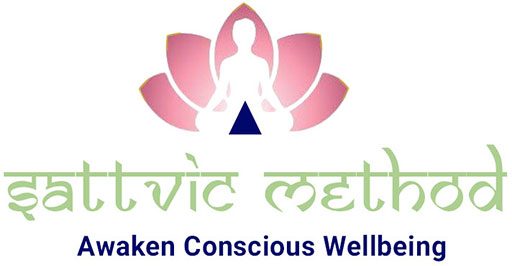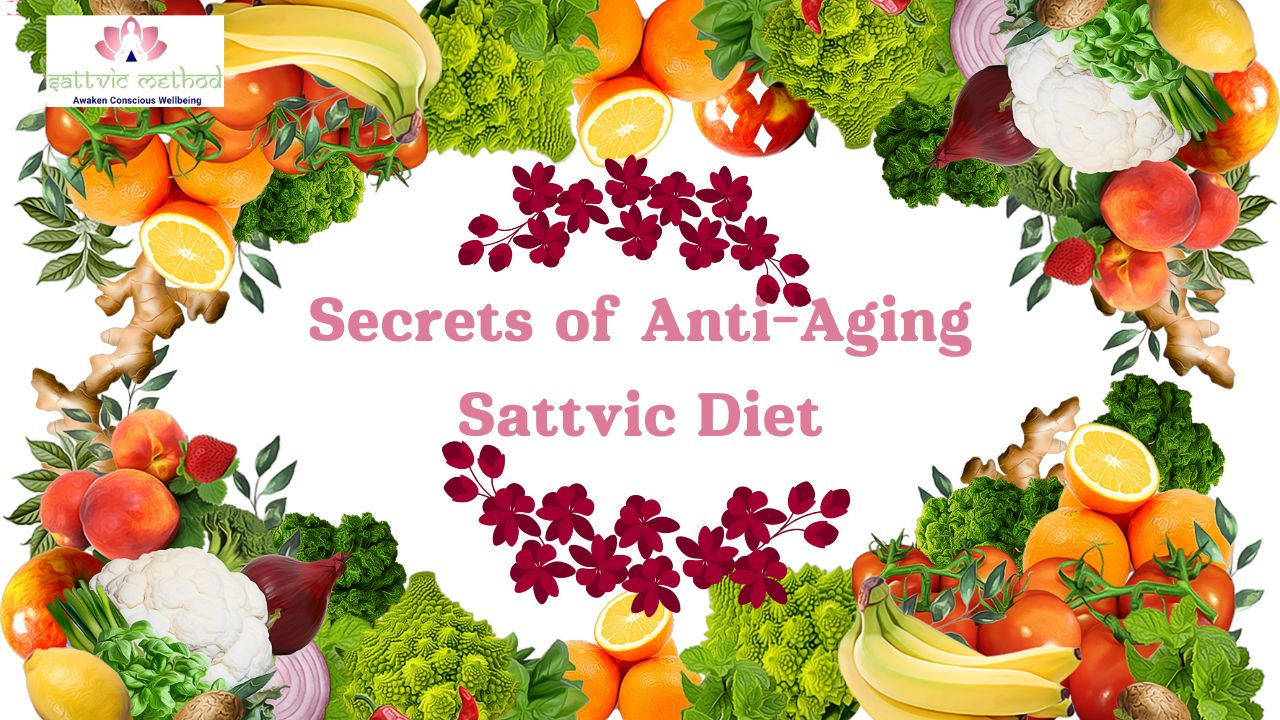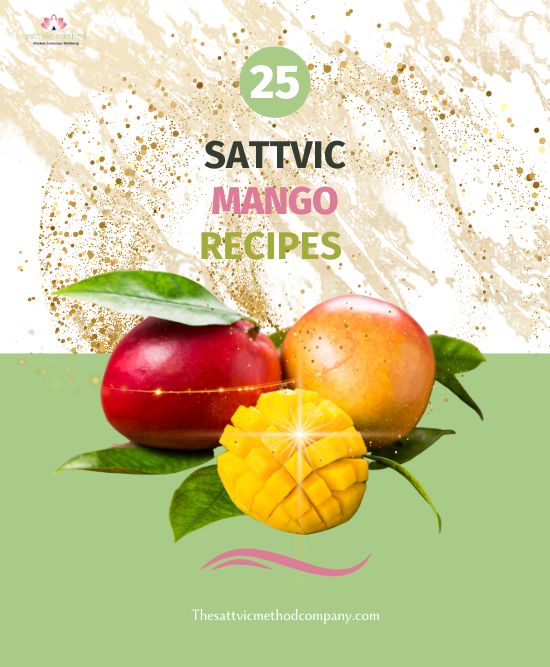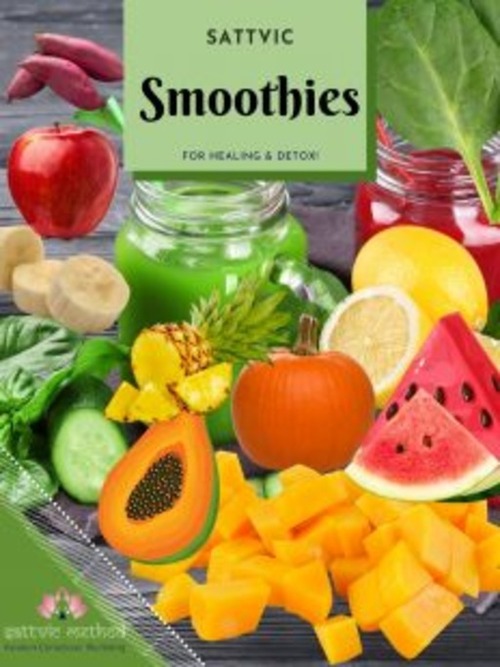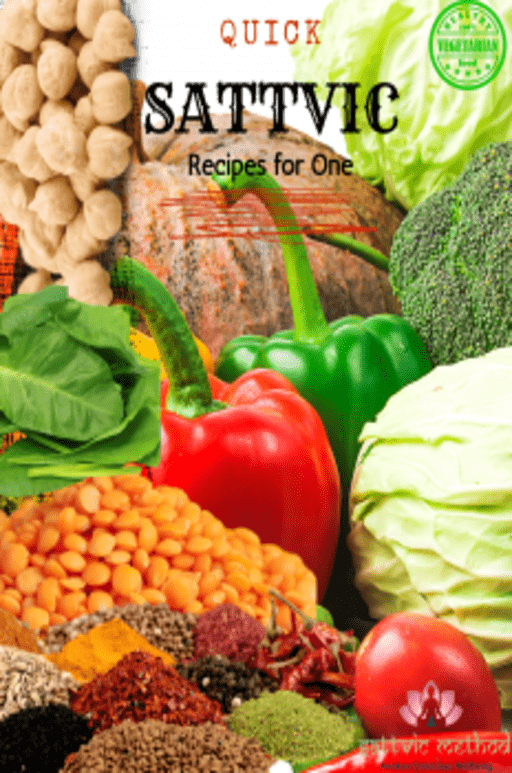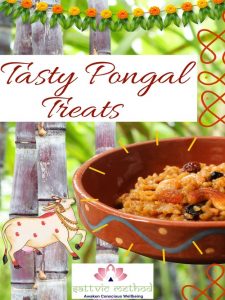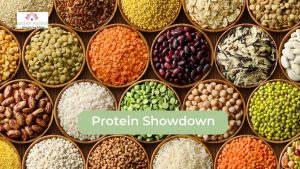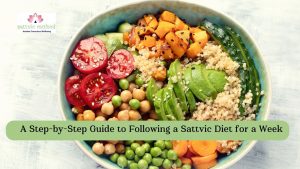June is designated as the Fresh fruits and vegetables month. There are numerous benefits of eating more fresh fruits and vegetables. The Sattvic Method encourages the use of more fresh fruits and vegetables and spacing, or eating diverse vegetables and fruits are also important for the well being. When properly applied, the sattvic diet is anti-aging. If you need help to formulate your sattvic meal plan, you can sign up for a session here. In this blog post you will read more about the sattvic secrets of Anti-aging.
Fresh fruits and vegetables are endowed with powerful natural chemicals that slow down aging. Take a look at the powerhouse the natural fruits and vegetables are:
- Fruits and vegetables are rich in antioxidants that help stop oxidative stress, reduce the damage to the cells that are caused by free radicals which are dangerous. Free radicals are unstable molecules that can be formed naturally in your bodies as part of normal metabolic processes. They can also be generated by external factors such as exposure to environmental pollutants, cigarette smoke, radiation, or unhealthy lifestyle habits like a poor diet or excessive alcohol consumption. Free radicals are highly reactive in nature and can cause damage to cells, proteins, DNA, and other important cellular components.
- Many fruits and vegetables contain anti-inflammatory compounds that can reduce inflammation, a factor associated with aging. Fresh vegetables and fruits contain many antioxidants, including enzymes, vitamins, minerals, and phytochemicals.
- Some fruits and vegetables, such as citrus fruits and bell peppers, provide vitamin C, which is crucial for collagen synthesis and maintaining skin elasticity. Adding collagen to your diet can also helpto heal your gut and heal the sensitive lining of the stomach and large/small intestines. Most artificial collagen supplements do not work well and create more problems than solutions.
- Fruits and vegetables with high water content, like cucumbers and watermelon, contribute to skin hydration and promote a youthful appearance. Fruits such as cantaloupe, grapefruit, strawberries, and watermelon have about 90% or higher water content. Eating these fruits will help you feel fuller, and you will also bulk on fiber. Normally your gut needs more fiber and water to function efficiently. Eating fresh fruits and vegetables gives you both fiber and water.
- Fruits and vegetables are rich in nutrients, packed with essential vitamins, minerals, and phytonutrients that support overall health and may slow down the aging process. These natural elements also protect DNA from damage and mutations associated with aging.
- Adding fresh fruits and vegetables protects major organs. Potassium-rich fruits and vegetables like bananas and leafy greens may help regulate blood pressure, a vital factor in healthy aging. Carrot, spinach, and berries contain antioxidants and nutrients that support eye health and reduce age-related vision problems. Most fruits and vegetables are rich in fiber, antioxidants, and other nutrients helps to maintain optimum cardiovascular health and reduce the risk of age-related heart diseases. Fruits and vegetables with vibrant colors like blueberries, are known to improve cognitive function and reduce the risk of age-related neurodegenerative diseases. Cruciferous vegetables such as broccoli and kale contain compounds that support liver health and detoxification, promoting overall well-being as you age. Fruits and vegetables provide essential minerals like calcium, magnesium, and potassium, which are important for maintaining bone strength and preventing age-related bone loss.
- Incorporating fruits and vegetables into a balanced diet can support weight management and reduce the risk of obesity-related aging issues. High-fiber fruits and non-starchy vegetables can help regulate blood sugar levels and reduce the risk of age-related diseases like type 2 diabetes.
As mentioned above, fruits and vegetables contain a diverse range of antioxidants, including enzymes, vitamins, minerals, and phytochemicals. The combination of the active biological molecules with antioxidant properties and the synergistic effects contribute to the overall antioxidant capacity of plant-based foods.
Read these examples of specific enzymes and chemicals found in vegetables that possess antioxidant properties and the sattvic recipes formulated using these enzymes:
- Superoxide Dismutase (SOD): SOD is an enzyme that helps neutralize the superoxide free radical, which is a highly reactive and damaging free radical. Vegetables like spinach, broccoli, and Brussels sprouts contain SOD. Try this Brussels Sprouts sattvic recipe.
- Catalase: Catalase is an enzyme that converts hydrogen peroxide, a potentially harmful reactive oxygen species, into water and oxygen. Vegetables such as potatoes, radishes, and cucumbers are good sources of catalase. Here is a sattvic recipe that provides Catalase.
- Glutathione: Glutathione is a powerful antioxidant that helps protect cells from oxidative damage. Vegetables like asparagus, avocado, and spinach are known to contain high levels of glutathione. This sattvic recipe helps you get more Glutathione.
- Flavonoids: Flavonoids are a class of phytochemicals with potent antioxidant properties. Examples of flavonoids found in vegetables include quercetin (found in onions, kale, and broccoli), kaempferol (found in spinach, kale, and Brussels sprouts), and apigenin (found in celery, parsley, and artichokes). Make this sattvic recipe rich in flavonoids.
- Carotenoids: Carotenoids are pigments responsible for the vibrant colors of many fruits and vegetables, and they also act as antioxidants. Beta-carotene (found in carrots, sweet potatoes, and spinach), lycopene (found in tomatoes), and lutein (found in leafy greens like kale and spinach) are well-known carotenoids with antioxidant properties. These recipes are rich in Carotenoids. Give it a try.
- Vitamin C: Also known as ascorbic acid, vitamin C is a water-soluble antioxidant that helps protect cells from oxidative damage. Citrus fruits (such as oranges and lemons), strawberries, kiwis, and bell peppers are excellent sources of vitamin C. Try this Vitamin C rich recipe.
- Vitamin E: Vitamin E is a fat-soluble antioxidant that protects cell membranes from oxidative damage. Green leafy vegetables like spinach and kale, as well as nuts and seeds, are rich sources of vitamin E.
The recipes provided by the Sattvic Method help you get a double dose of anti-ageing because of the spices used in cooking. The antioxidants found in spices besides enhancing the flavor of the food also offers notable health benefits:
- Curcumin: found in turmeric, gives it its distinctive yellow color. It is known for its potent antioxidant and anti-inflammatory properties and fights age-related diseases. Turmeric is widely used in culinary dishes. Here is a recipe from Sattvic Method.
- Gingerol: bioactive compound found in ginger is renowned for antioxidant, anti-inflammatory, and anticancer properties. Ginger is commonly used in both sweet and savory dishes, as well as in herbal teas and beverages.
- Cinnamaldehyde: is the main compound responsible for the characteristic flavor and scent of cinnamon. It has antioxidant and anti-inflammatory properties. Cinnamon is used in baking, beverages, and various culinary preparations.
- Eugenol: is a phenolic compound found in cloves is an antioxidant and has been studied for its potential benefits in reducing oxidative stress and inflammation. Cloves are often used in baking, pickling, and spice blends.
- Rosmarinic acid: Rosmarinic acid is a phenolic compound found in rosemary. It exhibits antioxidant and anti-inflammatory effects and has been associated with potential neuroprotective benefits. Rosemary is used in savory dishes, marinades, and herbal teas.
- Capsaicin: is responsible for the “heat” in chili peppers. It has antioxidant properties and has been studied for its potential health benefits, including its role in weight management and cardiovascular health. Chili peppers are used in various cuisines and spicy dishes.
- Quercetin: is a flavonoid antioxidant found in various spices, including onions, garlic, and capers. It exhibits anti-inflammatory and antioxidant effects and has been associated with potential cardiovascular and neuroprotective benefits.
- Piperine: is a bioactive compound found in black pepper with antioxidant properties. Adding pepper benefits nutrient absorption and reduces oxidative stress. Black pepper is a commonly used spice in cooking.
- Saffron: contains various compounds, including crocin, crocetin, and safranal, which exhibit antioxidant properties. Saffron has been associated with potential benefits for mood enhancement, cognitive function, and eye health.
When you include the spices in fresh vegetables and fruits, you can get double the dose of antioxidant dose. The secret to the Sattvic Method is pairing a variety of spices into your meals to provide a range of health benefits and enhance the overall antioxidant capacity of your diet. Researchers have discovered several benefits of eating antioxidant-rich foods, some of which are listed below-
- Antioxidants help neutralize free radicals, which can cause cellular damage and contribute to various diseases, including cancer, cardiovascular disease, and neurodegenerative disorders.
- Antioxidants help protect our DNA from oxidative damage, reducing the risk of mutations and genetic abnormalities.
- Many antioxidants have anti-inflammatory properties, which can help reduce chronic inflammation, a common factor in many diseases.
- Antioxidants, such as flavonoids and polyphenols, have been linked to improved cardiovascular health by reducing oxidative stress, promoting healthy blood vessel function, and reducing the risk of heart disease.
- Antioxidants play a role in supporting a strong immune system, helping to protect against infections and promoting overall immune function.
- Antioxidants, such as vitamins C and E, help protect the skin from oxidative damage caused by UV radiation, pollution, and other environmental factors. They also support collagen synthesis, promoting skin elasticity and a youthful appearance.
- Antioxidants like lutein and zeaxanthin, found in fruits and vegetables, help protect the eyes from oxidative damage and reduce the risk of age-related macular degeneration and cataracts.
- Some antioxidants have been shown to have anti-cancer properties by inhibiting the growth of cancer cells and reducing the risk of tumor formation.
- Antioxidants, particularly flavonoids, have been associated with improved cognitive function, memory, and a reduced risk of neurodegenerative diseases like Alzheimer’s and Parkinson’s.
- Antioxidants found in fruits and vegetables, such as glutathione, support liver health and detoxification processes, aiding in the elimination of toxins and promoting overall liver function.
- Oxidative stress is a major contributor to the aging process, and antioxidants can help reduce oxidative damage, promoting healthy aging and potentially slowing down the onset of age-related diseases.
- Some antioxidants, like catechins in green tea, have been linked to weight management and metabolic health by supporting fat oxidation and reducing inflammation. Antioxidants like vitamin C, vitamin K, and polyphenols contribute to bone health by promoting collagen synthesis, enhancing calcium absorption, and reducing bone loss.
- Antioxidants, such as vitamin C and certain flavonoids, have been associated with improved mood and reduced symptoms of depression and anxiety. Beta-carotene and vitamin C have been associated with improved lung function and reduced risk of respiratory conditions, such as asthma.
- Antioxidants found in fruits and vegetables can help regulate blood sugar levels, improve insulin sensitivity, and reduce the risk of type 2 diabetes. Antioxidants and dietary fiber found in fruits and vegetables support a healthy gut microbiome, promoting proper digestion, nutrient absorption, and a balanced immune response.
In general, nutritionists also emphasize the importance of antioxidants in maintaining overall health and well-being. The key points that nutritionists often highlight regarding antioxidants in diet:
- Nutritionists recognize that antioxidants play a vital role in combating oxidative stress caused by free radicals. The free radicals are bad as they are unstable molecules that can damage cells and contribute to the development of chronic diseases, including cancer, heart disease, and neurodegenerative disorders. Antioxidants help neutralize free radicals and minimize their potential harm.
- The best way to obtain antioxidants is through a balanced diet that includes a variety of fruits, vegetables, whole grains, nuts, and seeds. These whole foods are rich in a wide range of antioxidants, along with other essential nutrients necessary for optimal health.
- It is important to consume antioxidants from whole foods rather than relying solely on isolated antioxidant supplements. Whole foods provide a combination of antioxidants that work together in synergy, enhancing their overall effectiveness and potential health benefits.
- Nutritionists encourage individuals to consume a diverse range of fruits and vegetables to maximize antioxidant intake. Different fruits and vegetables contain various antioxidants, each with its unique properties and potential health benefits. By consuming a variety of colorful plant foods, individuals can ensure they obtain a broad spectrum of antioxidants.
- Nutritionists often emphasize that antioxidants, along with other healthy lifestyle factors like regular physical activity and a balanced diet, contribute to healthy aging. While the direct impact of antioxidants on longevity is still being researched, including antioxidant-rich foods as part of a well-rounded lifestyle is seen as a positive step towards maintaining overall health and vitality as one ages.
It is important to note that a balanced and varied diet, rich in fruits, vegetables, and whole foods, provides a range of antioxidants along with other essential nutrients necessary for optimal health. The Sattvic Method encourages you to use the right spices in combination with fresh vegetables and fruits, especially seasonally abundant, helps you to build the health and well-being of your gut.
Here are some delicious, nutritious, healthy, sattvic recipe cookbooks.
Celebrate your life with sattvic food!
